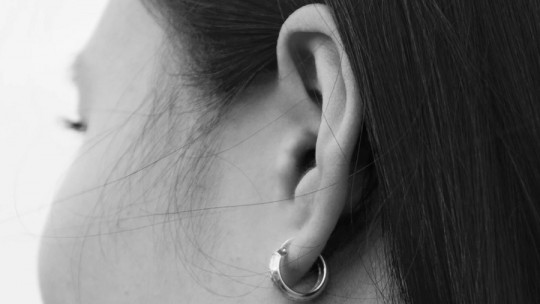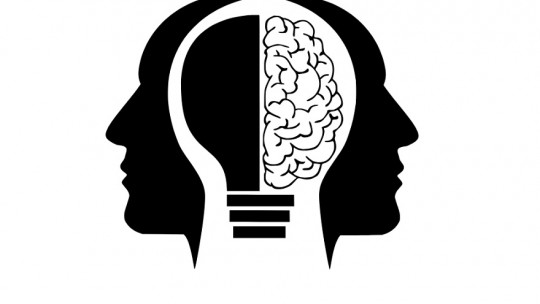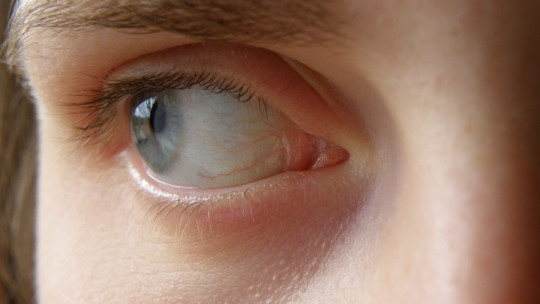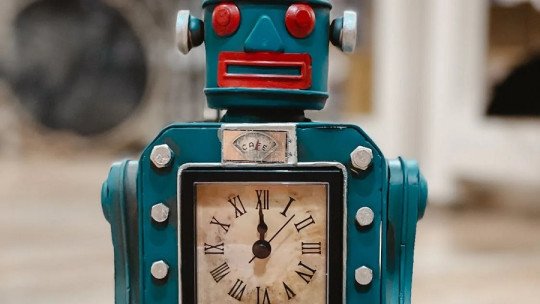People are constantly subjected to very complex situations in which a large number of stimuli compete for our attention. Although we may not realize it, we spend a lot of time sorting the relevant from the irrelevant, separating the wheat from the chaff.
This is fundamentally because our resources for processing information are very limited, so if we opened the dam of our attention without any control we would end up feeling how our ability to understand what is happening around us is overflowing.
In order to understand how our brain works in situations as frequent as this, a series of hypotheses were postulated throughout the 20th century that would mark the path to follow over the years. Of this, the rigid and attenuated filter model was the pioneer.
In this article we will precisely address the postulates of this classic model, placing special emphasis on the different points that information passes through from when it is perceived by the senses until it is persistently stored in memory.
Rigid filter model and attenuated filter model
The rigid filter model and the attenuated filter model propose a dynamic for the functioning of attention that stands out for the insertion of a filter or screening mechanism , through which the complexity of the environment would be refined and what was relevant would be selected from it. It includes elements of the multi-store memory theory, whose prior knowledge is basic for the correct understanding of these models: sensory store, short-term memory and long-term memory.
1. Sensory warehouse
The sensory store is the first stop in information processing, as it is the space in which sensations from the sense organs are deposited.
The perceptual fact, through any of its different modalities (visual, acoustic, olfactory, gustatory and tactile), requires little time to be captured by the nervous system, but requires a somewhat more elaborate analysis to determine its physical properties and nuances.
In this warehouse, with a very large capacity but a very limited duration, an extraordinary volume of elements about the situation in which we find ourselves settles, although almost all of them are diluted in a few seconds (without a deep cognitive analysis). The information would be transferred from here to the short-term memory, after being sifted through the attentional filter which will be discussed in detail later.
2. Short-term memory
After the information from the senses has crossed the aforementioned sensory store, it would be projected to short-term memory. At the moment an abstraction of the sensory image is retained a kind of interpretation of the object on which attention was placed.
This interpretation is an inaccurate picture, since has been subjected to a first process of cognitive elaboration in which some of its objective properties may have been altered.
This memory has a smaller amplitude than the sensory store, but its duration is much greater. In this way, the retention (now conscious) of this data can last for a few minutes, but it will tend to dissolve if it is valued as irrelevant by the receiver. In general terms, it is estimated that an individual (under normal circumstances) can retain up to seven simple elements at this processing station, with the normal range being three to eleven.
Anterograde amnesia provides reliable information about the very existence of this store, and is one of the arguments most commonly used by defenders of the compartmentalization of memory. This phenomenon describes the formation of new learning that only lasts a few minutes after which they disappear without being consolidated in any case (so they would never enter the long-term warehouse).
3. Long-term memory
When the information has been perceived by the sense organs, sent to the sensory store and derived to short-term memory, a process of conscious analysis of its importance occurs in order to transfer it to the last station: short-term memory. long term. It is in this place where declarative memories live that are very distant in time and to which we resort voluntarily when we wish.
Long-term memory has an indefinite duration, and can last throughout life. Here a declarative crystallization of experienced events (episodic), knowledge about the world (semantic) and acquired skills (procedural) is stored; all of this necessary due to its emotional relevance and/or its adaptive value. There are many brain regions involved in it which is why it is usually affected during the evolution of dementia processes.
Filter models
Once the different stores into which memory is divided are known, and after the analysis of its process from when the object is captured by the senses until it is eventually stored in a lasting way, it is easier to understand the rigid filter model and attenuated. These theories were developed in order to understand the way in which a human being deals with complex situations in which very diverse information competes with each other to be perceived, processed and stored.
Thus, it explores the characteristics of selective attention: how we discriminate information from the environment when it is complex, in order to collect what is relevant and articulate appropriate responses according to the context. Here we will review two pioneering hypotheses on this matter: the rigid filter (Donald Broadbent) and the attenuated one (Anne Treisman) both being the theoretical foundation on which subsequent theoretical elaborations would be built (such as the late filter model or others).
To better approximate these models, the most useful thing is to give an example: imagine that we are meeting with a friend in a bar, having coffee, while he or she tells us an interesting story. How do we focus attention on their words if the environment is flooded with other sounds that compete with them (such as people talking, clinking cutlery, and even cars driving near where we are)?
In order to explore what happens in our brain in everyday situations like this, the authors used an experimental procedure known as dichotic listening , and which consists of the simultaneous emission of two different messages through each of the auditory canals (with the help of headphones). The participant would remain seated listening to its content (numbers, words, etc.), and after the presentation he would point out what he believes he had perceived.
With this simple method the dynamics of selective attention could be explored , one of the expressions of this executive function, which consists of choosing a relevant stimulus and omitting irrelevant ones when both are presented at the same time. It is a basic skill for the development of activities of daily living, along with sustained attention (or vigilance) and divided attention (efficient approach to two or more important tasks at the same time).
Although it is true that both Broadbent and Treisman agreed on basic aspects, such as the existence of a sensory store and the process of transmitting information from short-term memory to the long-term store, they showed some discrepancies related to the concept. “filter”. In both cases its existence was contemplated as a pre-screening phase of stimulation complexity but different views were maintained related to its degree of permeability (as will be seen later).
1. Rigid filter model
The use of a filter could be compared, in Broadbent’s own words, to the “neck of a bottle.” Although the stimulating field in which we find ourselves may be very complex, our cognitive abilities only allow a discreet percentage of it to be processed and analyzed without exceeding the resources we have available. For this purpose, the filter would act as a sieve for environmental diversity to translate it into clear, operational and manageable terms.
This filter would be located, according to the author (although it was later questioned within the framework of the late filter of Deutsch and Deutsch), right at the end of the sensory store and before short-term memory. In this way, the stimuli would be processed serially, and never in parallel (which implies that the information is analyzed one by one and never simultaneously). With this filter, a selection of what is relevant and what is irrelevant would be facilitated, so that the former would transcend to short-term memory and the latter would be radically omitted.
According to Broadbent, the screening criterion would be the physical property of the stimulus , such as the tone or volume of the human voice, as well as the unpredictability with which it bursts into the perceptual field. Be that as it may, from these variables the individual would choose what is relevant to him, while the rest of the elements would be completely ignored without being attended to or understood.
Broadbent provided empirical evidence through dichotic listening, through an experimental condition that consisted of the emission of a short list of numbers in each of the examinee’s ears. For example, if you heard sequence 947 through your left ear and 246 through your right ear, only one or the other would be remembered (but never information that combined the two sources or all of the items included in the trial). He concluded that each of the ears would function as an independent channel, with only one of them being chosen and the other completely omitted.
2. Attenuated filter model
The attenuated filter was proposed by Treisman, following his attempts to replicate Broadbent’s findings. Between the proposals of these two authors there is a basic difference, located precisely in the qualities of the filter as an inserted element within the processing of information.
Treisman considered that there was no absolute blockage of the unattended stimulus , but rather that it was processed in some way despite the person trying to focus on what was relevant. Unattended messages would see their salience reduced, but they would not disappear.
Like Broadbent, he used dichotic listening to test his hypothesis. In this case, verbal messages (sentences with meaning) were used, but dividing the informative segments in a particular way.
For example, two messages with no logical connection would be played successively through the left ear (such as “I grabbed a coat, we caught four fish”), while in the right ear another very similar message would sound in terms of structure (“we went fishing because it was cold.” cold”). In such a case, the person would claim to hear “I took a coat because it was cold” or “we went fishing and caught four fish”, demonstrating that she had attended to both messages at the same time.
The explanation for this finding for Treisman was that the filter does not completely override the unattended message , but this continues to be processed at some level and can begin to monopolize attention if it provides congruence to what was being perceived up to that very moment. He also showed, for example, that people remembered basic aspects of “ignored” information, even using Broadbent’s own paradigm (changes in voice volume, timbre, pitch, or sex of the speaker; as well as the reproduction of the speaker’s name). evaluated subject).
Thus, certain conditions of the individual (such as their life experience or their expectations for the future) would be responsible for attributing perceptual relevance to the stimulus. Furthermore, the filter would act by weakening less relevant messages, but these would not be completely inhibited (as suggested by the rigid filter). There would therefore be a basic processing at the semantic level (precategorical type) with which the selection tasks would be optimized without saturating the cognitive system.









